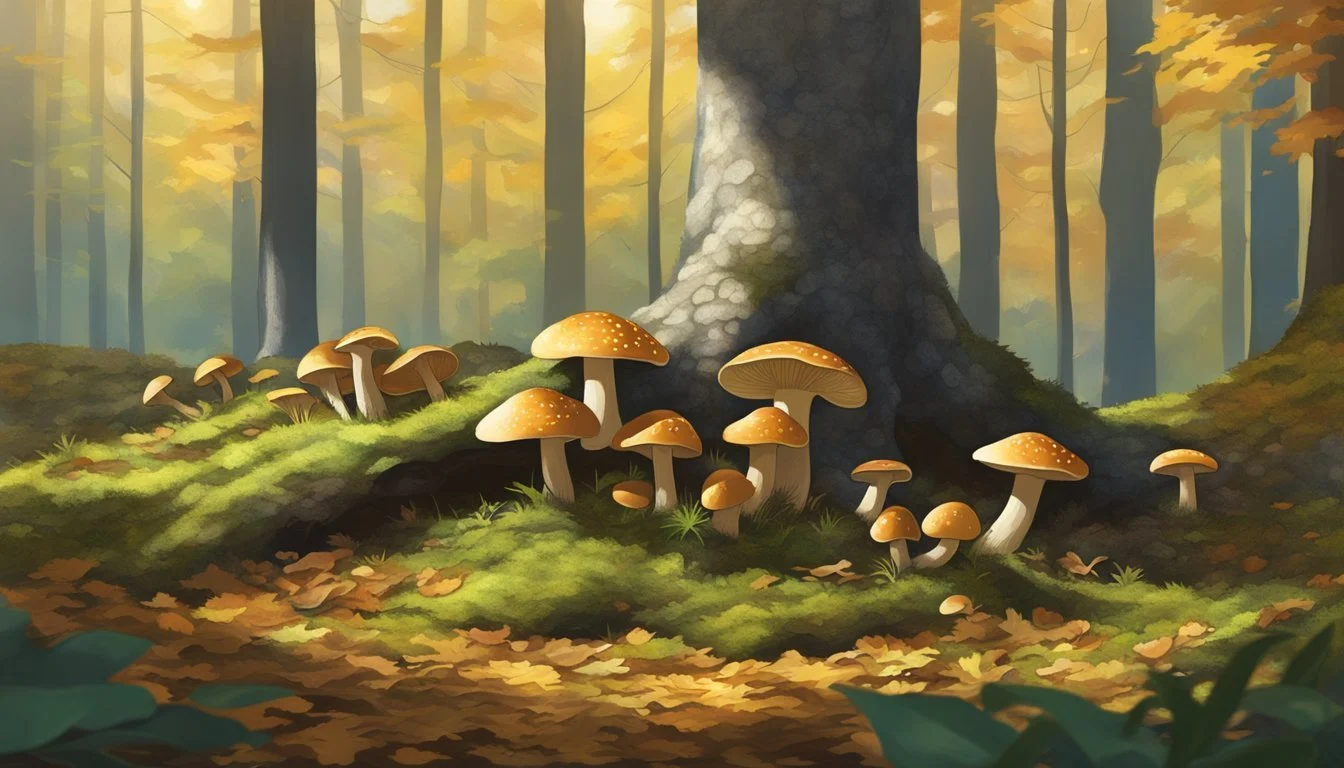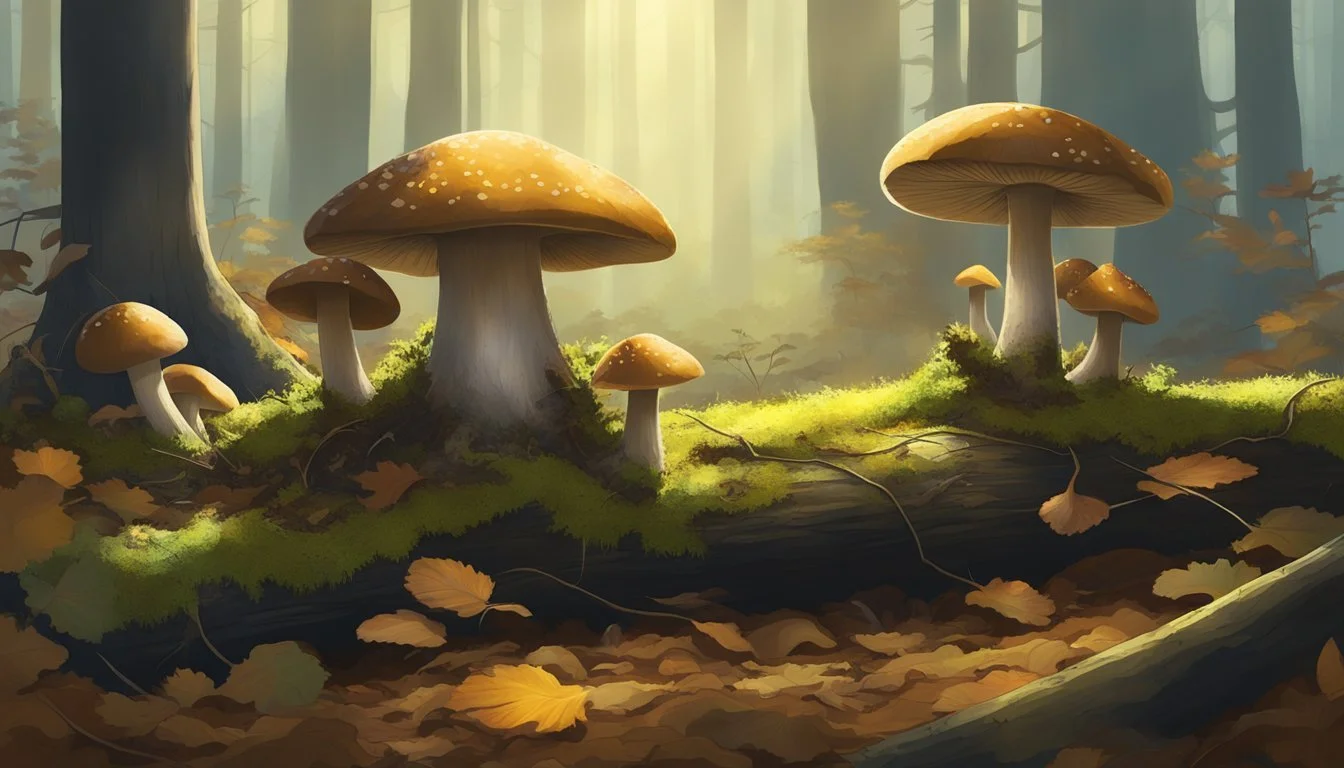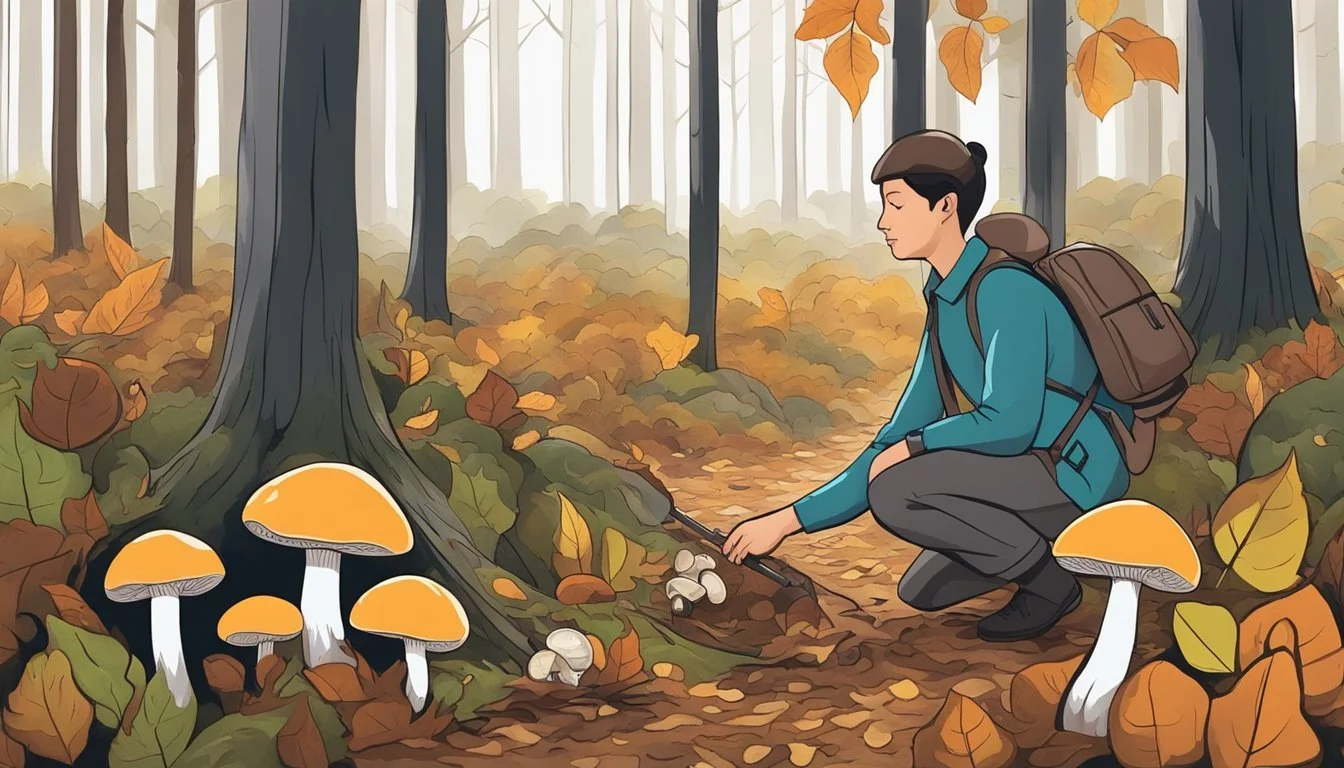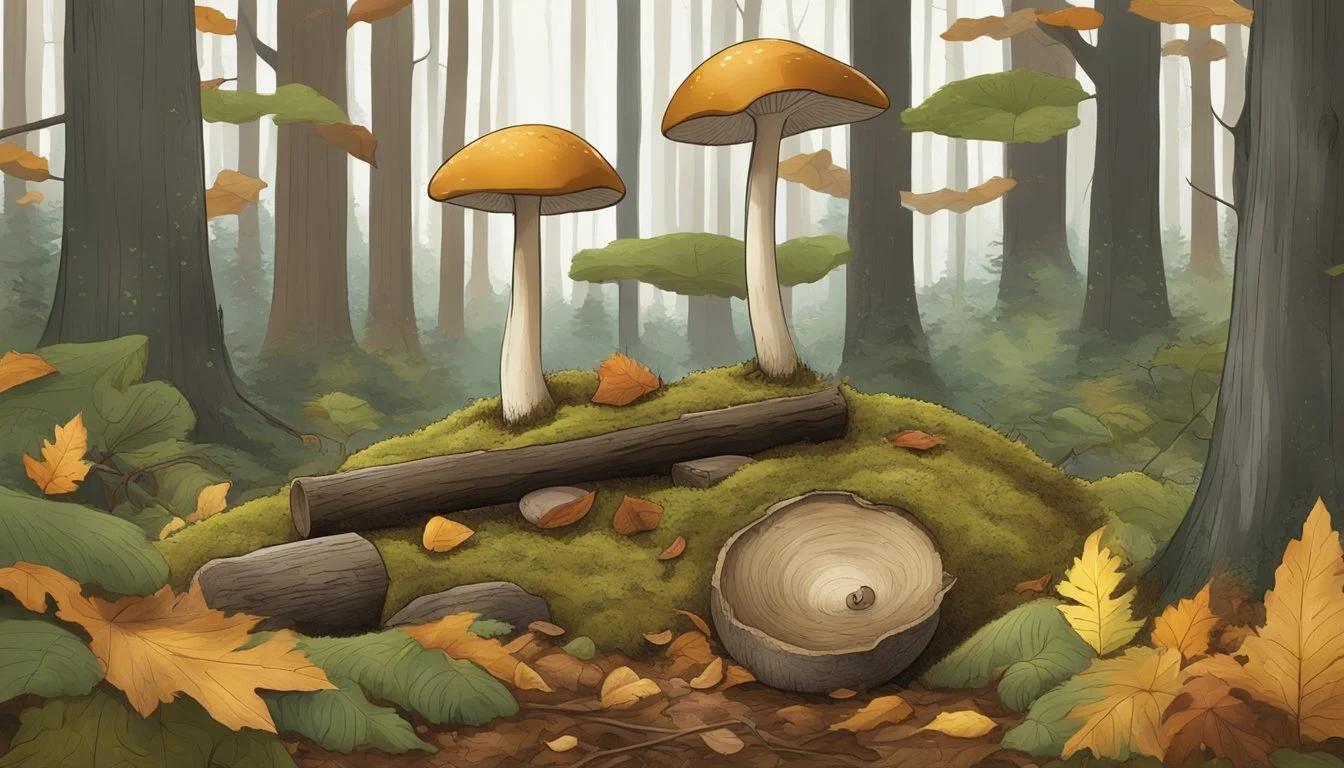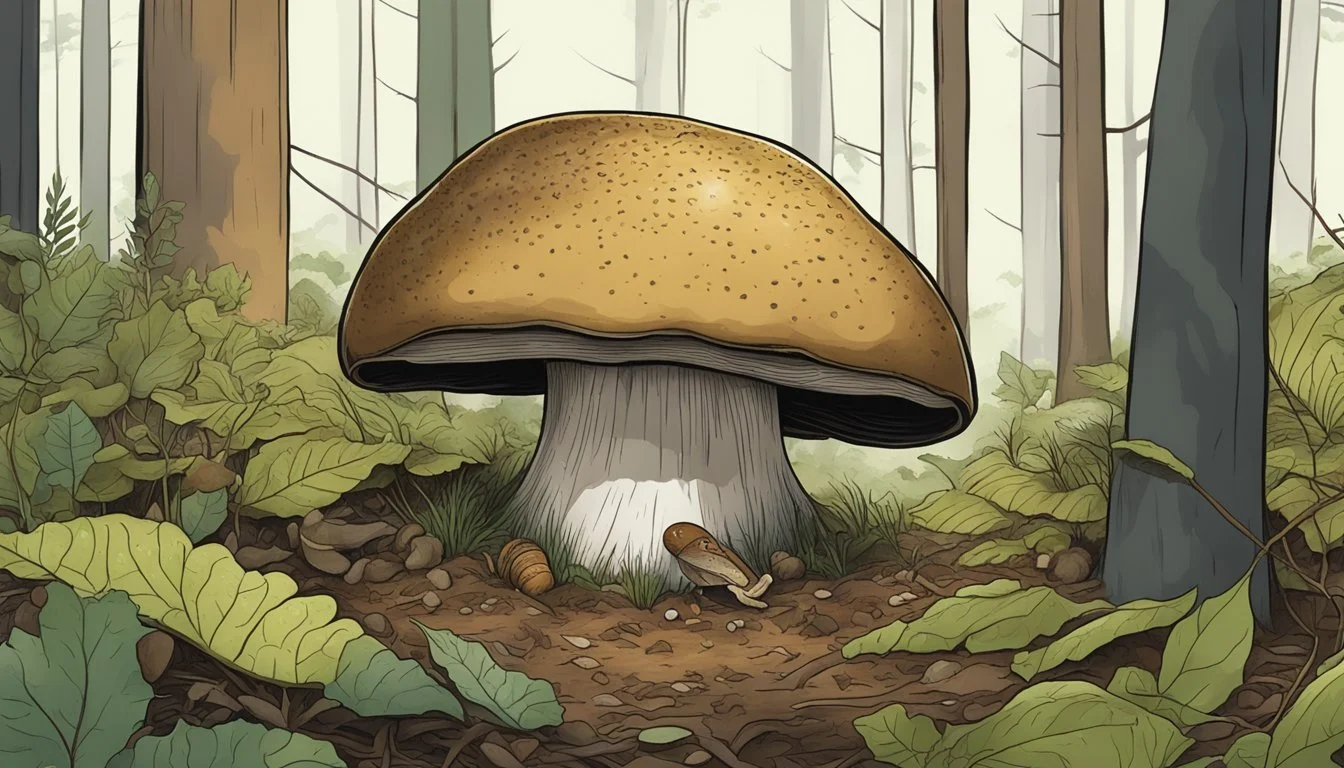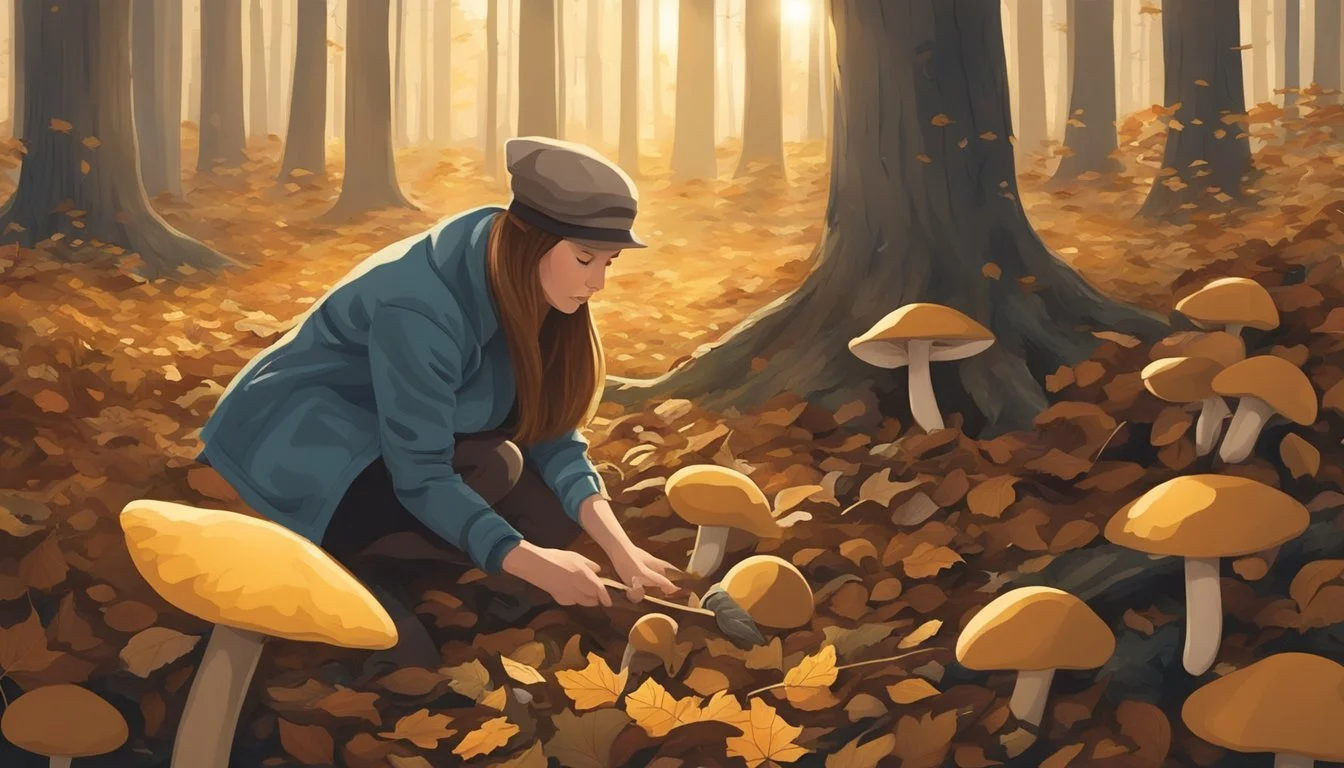Foraging and Harvesting Barrow's Bolete
Expert Tips to Safely Gather This Wild Mushroom
This Article is Part of Our Guide on Foraging and Harvesting Wild Mushrooms
Barrow's Bolete, scientifically referred to as Boletus barrowsii, is a prized find for mushroom foragers. This particular species is recognized by its pale coloring, often found in the forested regions of Western North America, including the state of Colorado and the unique ecosystem of the southwestern Sky Islands. Like its close relative the King Bolete, Barrow's Bolete is esteemed for its edibility and the subtle nuances it can bring to a myriad of culinary dishes.
When embarking on the pursuit of Barrow's Bolete, foragers must be mindful of essential practices. Seeking permission to forage on private land is a cornerstone of foraging etiquette, as is understanding the intricacies of the local ecosystem. Knowledge of the fungal life cycle, habitat preferences, and the consideration for sustainable harvesting practices are crucial to ensure that the Barrow's Bolete populations remain robust and continual for future foraging endeavors.
Foraging Barrow's Bolete requires a blend of skill and understanding, as they form symbiotic relationships with specific tree species. Locating the right host trees is a fundamental step in the foraging process. The health and growth of these mushrooms (What wine goes well with mushrooms?) depend on a mycorrhizal association, in which they exchange nutrients and support with the trees, making the understanding of this relationship valuable to both the successful forager and the preservation of the species.
Barrow's Bolete are Commonly Found in these US-States
Barrow's Bolete, also known as Boletus barrowsii, is a species of edible mushroom found in various regions throughout the western United States, particularly in the following states:
Barrow's Bolete is a mycorrhizal fungus, meaning it forms a symbiotic relationship with the roots of certain trees, primarily oak and pine species. The fruiting season typically occurs from late summer through fall.
Biology of Barrow's Bolete
Barrow's Bolete is a distinguished edible mushroom, scientifically recognized as Boletus barrowsii. This section explores its biology, from classification to its various relationships within its ecosystem.
Classification and Taxonomy
Boletus barrowsii is part of the Boletaceae family, within the Basidiomycota division of fungi. This taxon falls under the Boletales order, which includes a wide range of mushroom species that share similar ecological roles.
Physical Description
The cap of Barrow's Bolete is typically white to pale brown and can reach up to 30 cm in diameter. Below the surface, the pores are small and typically yellow. The stem is solid and often features a reticulated, or net-like, pattern. The flesh is white and retains its color when cut or bruised.
Mycorrhizal Relationships
Barrow's Bolete forms ectomycorrhizal associations with specific host trees, particularly ponderosa pine and coast live oak. These relationships are mutually beneficial, with the fungus assisting the tree in nutrient acquisition.
Distribution and Habitat
This species is found in western North America, with sightings ranging from California to British Columbia and inland to Colorado. It frequently grows in mixed woodland environments and is often associated with the aforementioned host trees.
Reproduction and Growth
Reproduction occurs through the release of spores, which are olive-colored in their spore print. The fruit bodies typically appear in autumn to winter, depending on local climate conditions.
Identification and Comparison
Barrow's Bolete can be mistaken for the Boletus edulis (King Bolete), also known as porcini, but is differentiated by its paler cap color. Caution should be exercised as it could also be confused with certain blue staining or poisonous boletes.
Bolete Mushroom Varieties
There are numerous bolete varieties, including Boletus edulis (King Bolete), Leccinum scabrum (Birch Bolete), and Suillus luteus (Slippery Jack). Each species has distinct characteristics that aid in identification, such as cap texture, color variations, and spore print color.
Foraging for Barrow's Bolete
In the pursuit of the white-capped Barrow's Bolete (Boletus barrowsii), foragers must be attuned to the mushroom's unique requirements and heed practices promoting sustainability. The following subsections delineate the pivotal aspects of foraging for this specific bolete.
Foraging Techniques
Barrow's Bolete thrives in symbiosis with certain trees, so a forager should search in woodlands where these trees are prevalent. Experienced foragers recommend softly tapping the forest floor debris covering potential bolete habitats to uncover these mushrooms. A minimal disturbance approach maximizes the chance of encountering this species while preserving the ecosystem.
Seasonality and Weather
The presence of Barrow's Bolete correlates strongly with the mushroom fall, typically after a rainy period when the soil is moist. Foragers should monitor local weather patterns, with optimal conditions arising in late summer through to fall. The occurrence of rain and subsequent warm periods encourage the fruiting of Barrow's Bolete.
Environmental Considerations
Every forager should practice sustainability to limit their impact on the ecosystem. This entails selective harvesting, whereby only mature specimens are collected, allowing younger ones to release spores. Additionally, foragers should seek to leave the gathering site as undisturbed as possible, maintaining the natural balance within the habitat.
Safety and Edibility
Barrow's Bolete is an edible mushroom known for its nutty flavor, but foragers must cautiously distinguish it from poisonous look-alikes. Key identifying features include its white cap and lack of gills, since it instead exhibits pores. A spore print can assist in proper identification, and a gentle odor test—searching for an earthy smell—is also advantageous. Seeking guidance from a reliable guide book or an experienced forager can further safeguard against misidentification.
To protect oneself and the environment, it is imperative to never consume any mushroom unless its edibility has been absolutely confirmed.
Culinary Applications
Barrow's Bolete mushrooms are a culinary delight sought after by foragers for their rich flavor and versatility in cooking. This section explores various ways to transform this wild edible into delectable dishes.
Cooking Methods
Barrow's Bolete can be prepared using various cooking methods to enhance their delicate, nutty taste. Common preparations include:
Sautéing: Quickly cooking the sliced mushrooms over medium heat brings out their flavor while retaining a firmer texture.
Roasting: Roasting in a hot oven concentrates the flavors and can add a slight crispness to the cap and stem.
Steaming: A gentle cooking method preserving most of the nutritional value and natural flavors.
Flavor Profile
The flavor profile of Barrow's Bolete is distinct:
Flesh: Offers a tender, meaty texture with a subtle nuttiness.
Pores: The pore surface, usually soft and spongy, should be removed if it turns slimy upon cooking.
Overall Taste: Described as earthy and rich, complementing a variety of savory dishes.
Preservation Techniques
Preserving Barrow's Bolete ensures extended use:
Drying: Drying the mushrooms intensifies their nutty flavor and provides long-term storage.
Freezing: Once cooked, the mushrooms can be frozen for several months, retaining most of their taste and texture.
Pickling: An excellent method that adds a tangy flavor, suitable for species with firmer flesh.
Nutritional Benefits
Barrow's Bolete is not only notable for its culinary uses but also for its nutritional value:
Vitamins & Minerals: They are a good source of essential nutrients, contributing to a healthy diet.
Low in Calories: Yet nutritious, making them an ideal ingredient in a variety of diets.
Cultural and Historical Context
Barrow's Bolete, classified in the scientific community as Boletus barrowsii, holds a distinctive place in both cultural traditions and historical records as an edible species. These mushrooms are part of the rich tapestry of foraging practices, ingrained in the cultural fabric and documented through historical references.
Traditional Uses
Traditionally, Boletus barrowsii has been a sought-after edible species. It was regularly foraged for its nutritional value and incorporated into various dishes. In various cultures, these mushrooms served as important ingredients, providing substance and flavor to meals especially during the fall mushroom season when they are most abundantly found.
Nutritional Value: High in protein and fiber.
Culinary Applications: Typically sautéed, used in soups, and sauces.
Cultural Significance
Boletus barrowsii is not just an edible species; it carries cultural relevance for local communities who have traditionally engaged in the foraging of this mushroom. The knowledge of identifying and harvesting this mushroom is often passed down through generations, symbolizing a connection with nature and traditional food practices.
Community Gatherings: Foraging often acts as a communal activity, strengthening social bonds.
Knowledge Transmission: Skills in identification and sustainable harvesting practices are imparted from elders to the youth.
Historical References
Historically, Barrow's Bolete has been mentioned in various texts and journals, illustrating the species' long-standing recognition. Initially confused with similar species such as B. edulis, it wasn’t until more recent taxonomical studies that Boletus barrowsii was established as its distinct species.
Taxonomical Clarification: Detailed historical documentation has helped differentiate B. barrowsii from other boletes.
Folklore and Literature: It often featured in local stories, emphasizing its importance within certain communities.
Conservation and Sustainability
In discussing the conservation and sustainability of Barrow's Bolete, it's essential to consider the species' impact on ecosystems and the regulations that ensure its preservation. These measures help maintain ecological balance and promote the sustainable practices of foraging.
Impact on Ecosystems
Barrow's Bolete, Boletus barrowsii, establishes a symbiotic relationship with host trees within its habitat. The health of these ecosystems is directly tied to the presence of this mycorrhizal mushroom. Sustainable foraging practices are critical as they help protect this balance. Overharvesting could disrupt the nutrient exchange between the mushrooms and their host trees, potentially harming the broader ecosystem that relies on this equilibrium.
Species: Barrow's Bolete (Boletus barrowsii)
Habitat: Found in coniferous and mixed woodlands, especially with ponderosa pine
Impact: Plays a role in the forest's nutrient cycle and helps maintain healthy soil structure
Regulations and Preservation
Regulations surrounding the foraging of Barrow's Bolete are designed to minimize the impact on their populations and habitats. These guidelines may vary by region but generally include:
Permits: Required for foraging in certain areas to control the impact on the species
Quotas: Limits on the amount that can be harvested to prevent overcollection
Foraging Methods: Guidelines on methods (e.g., cutting versus pulling) to preserve the fungi's underground structures
Adherence to these regulations is vital for the preservation of Barrow's Bolete. Sustainable practices, such as selective harvesting and understanding the distribution of these mushrooms, contribute to conservation efforts. By respecting these guidelines, foragers ensure that Barrow's Bolete continues to thrive in its natural ecosystem.
Distribution: Mostly in Western North America
Conservation: Regulated foraging to ensure species longevity
Sustainable Practices: Ethical harvesting methods, awareness of distribution, and compliance with local foraging regulations
Research and Studies
Barrow's Bolete has piqued the interest of mycologists and researchers looking to understand its ecological role and taxonomy. Studies and experiments continuously expand our knowledge of this species, offering insight into its classification and interrelationships in the natural world.
Academic Interest
Academic research into Barrow's Bolete, primarily carried out by mycologists and ecologists, is essential in understanding the species' characteristics and habitat. Molecular studies have been particularly significant, revealing that there is greater diversity within what has traditionally been identified as Barrow's Bolete. Publications and peer-reviewed articles often focus on the species' distribution, ecological impact, and potential for culinary use.
Ongoing Experiments
Controlled experiments and laboratory studies are at the forefront of current mycological research, with Barrow's Bolete often featured. Ongoing experiments may include:
Molecular analysis to assess genetic variation and relatedness to other bolete species.
Laboratory growth studies to evaluate the mycorrhizal relationships between the fungus and host trees.
Such experiments contribute to a deeper understanding of the species' biology and its interaction with the environment.
Taxonomic Clarifications
The taxon of Barrow's Bolete has undergone scrutiny, with recent molecular studies indicating that there are multiple unique lineages. This has prompted taxonomic clarifications, as researchers aim to accurately classify these lineages within the Boletus genus. The implications of this research are profound, as they affect the classification and conservation strategies for Barrow's Bolete and related species.
Resources and Guides
For those interested in foraging and harvesting Barrow's Bolete, an array of resources is crucial for safe and responsible collecting practices. From esteemed guides to active online communities and professional bodies, enthusiasts from amateur mycologists to professionals can expand their knowledge and skills.
Foraging Guides and Books
Foraging for Barrow's Bolete requires accurate identification and knowledge of habitats. Books and field guides written by expert mycologists are indispensable resources. They often feature detailed descriptions, photographs, and tips on the ecology of Barrow's Bolete.
"The Bolete Afficionado's Handbook" by Dr. Fungi: Comprehensive identification key focused on Bolete species.
"Mycology for Foragers" by Hannah Jenkins: Covers basics for amateur mycologists with a section on Barrow's Bolete.
Online Communities and Forums
It's in online forums and communities that foragers share real-time insights, identification tips, and foraging experiences. These platforms can be particularly helpful for individuals seeking advice from more experienced foragers.
The Mushroom Hunters Forum: A thriving online community with a dedicated section for Barrow's Bolete.
FungiSeekers Online: A forum providing identification help and habitat discussions from mycologists and experienced foragers.
Professional Associations
Professional associations offer a wealth of knowledge through workshops, seminars, and publications. They are a conduit for continuous learning and a means to connect with peers in the field of mycology.
The American Mycological Society: Offers membership opportunities, publications, and organized forays with a focus on conservation.
Global Fungi Association: Provides extensive databases, resources, and networking options for both professional mycologists and amateurs interested in advancing their understanding of boletes.
Ethical Foraging Practices
When foraging for Barrow's Bolete, a white species related to King Bolete found in Western North America, adhering to ethical guidelines ensures sustainability and minimal impact on ecosystems.
Permits and Legal Restrictions
Legal Compliance:
One must check local laws and obtain necessary permits or permissions before foraging, as regulations vary by region and property status.
Trespassing or collecting specimens from protected areas without consent is illegal and unethical.
Forager's Code of Conduct
Forager Etiquette:
Respect the habitats and other species sharing the space.
Be considerate of fellow foragers by taking only what is needed.
Knowledge Sharing:
Foragers should share knowledge responsibly, ensuring the foraging community is informed about ethical practices.
Responsible Harvesting
Harvesting Techniques:
Identify Barrow's Bolete correctly to avoid depletion of wrong species.
Use a knife or scissors to cut mushrooms, leaving the base to promote regrowth.
Impact on Ecosystem:
Limit harvesting to ensure that sufficient fruiting bodies are left for spore dispersal and species perpetuation.
Avoid over-harvesting and habitat destruction to maintain the species and ecological balance.
Conclusion
In the practice of foraging Barrow's Bolete (Boletus barrowsii), one must approach the process with respect and care for nature. They are identified by their distinctive white caps and are commonly found in Western North America. Foraging these mushrooms provides an enriching experience, but sustainable practices are essential.
Key takeaways include:
Respect the Habitat: Always ensure minimal impact on the ecosystem.
Permission is Paramount: Seek permission from landowners or authorities before foraging.
Identification: Accurate identification is critical to avoid poisonous look-alikes.
Harvesting Etiquette: Use proper tools and techniques to harvest mushrooms without harming the mycelium.
Foragers are advised to educate themselves properly before embarking on their foraging journey. Knowing the right season, typically from late spring to fall, increases the chances of a fruitful hunt. Additionally, one should only take what they need and leave enough for regeneration and wildlife sustenance.
Ultimately, foraging for Barrow's Bolete isn't just about the harvest; it's about being part of an ecological system. It involves understanding that each forager plays a role in preserving the natural heritage, ensuring that these fungal treasures can be enjoyed by generations to come.



